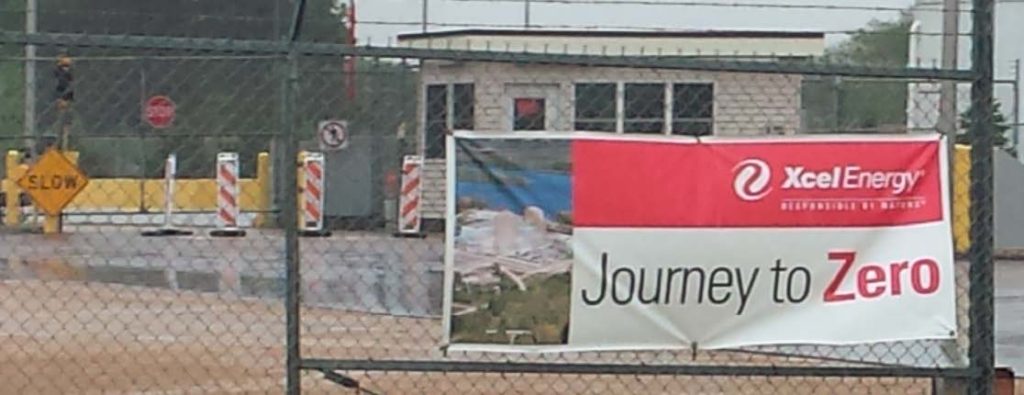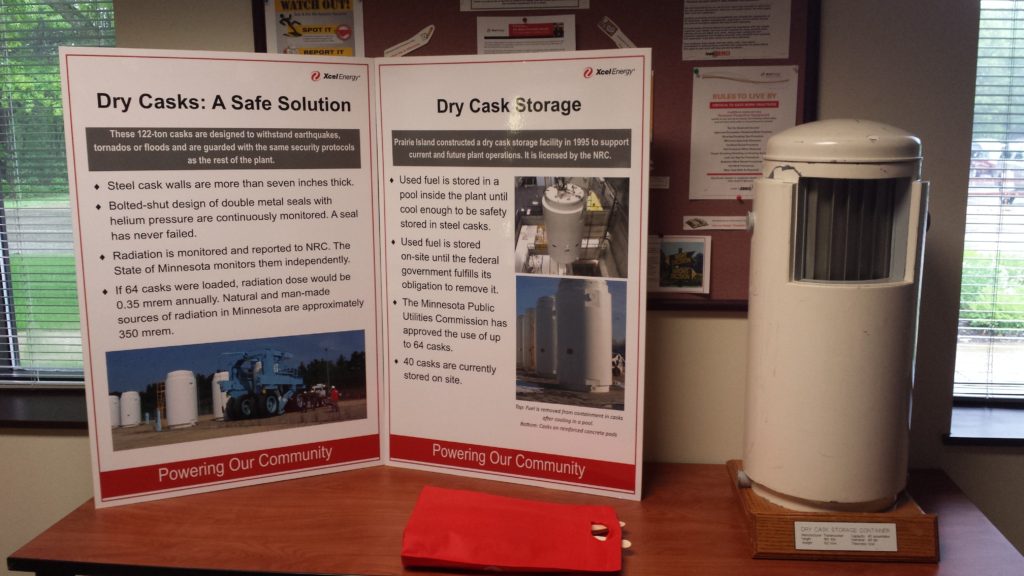Prairie Island Nuclear Plant Open House!
May 27th, 2017
 Whoa, got some catching up to do! Last Saturday, yes, a week ago, it was the annual open house at Prairie Island Nuclear Generating Plant. They had “fewer menu options” this year, I think last time they had salad and beans, but this year it was kinda grim for us “flexitarians.” But there was plenty of food for thought:
Whoa, got some catching up to do! Last Saturday, yes, a week ago, it was the annual open house at Prairie Island Nuclear Generating Plant. They had “fewer menu options” this year, I think last time they had salad and beans, but this year it was kinda grim for us “flexitarians.” But there was plenty of food for thought:  They had a number of displays in various rooms at the training center, and maybe these were the ones that were at the Goodhue County Historical Society a while ago, some looked familiar. Anyway, I made a bee-line for the casks, and had quite a chat with the staffer “whose name I can’t remember.” Why casks? Well, casks and I have a long history… and some things about the casks have not been resolved.
They had a number of displays in various rooms at the training center, and maybe these were the ones that were at the Goodhue County Historical Society a while ago, some looked familiar. Anyway, I made a bee-line for the casks, and had quite a chat with the staffer “whose name I can’t remember.” Why casks? Well, casks and I have a long history… and some things about the casks have not been resolved.
At the very beginning of attempts to utilize casks at Prairie Island, well, let us not forget the time the crane got stuck with the cask dangling way at the top dangling over the spent fuel pool:
Licensees have also experienced problems during the
movement of casks as a result of crane interlocks,
errors in the accounting for the weights of cask components, and human error... At Prairie Island
on May 13, 1995, a cask remained in the hoisted
position above the spent fuel pool for approximately
16 hours while the licensee developed and implemented
corrective actions to address an overload-sensing
system that was inaccurately calibrated for lifting
of a loaded dry storage cask. Changes in the
lifting procedure were required at Prairie Island
when it was discovered that a dry storage cask
weighed more than expected. The weight difference
was found to be the result of acceptable variations
in manufacturing tolerances that had not been
accounted for in previous weight calculations.
See also: NRC IN 96-26, “Recent Problems With Overhead Cranes,” issued April 30, 1996 (Accession Number 9604260095).
A very important issue to me that wasn’t resolved was how to change the cask seals. Each cask is like a giant steel thermos, with spent fuel assemblies dropped into a grid inside the cask, a seal is put on top and then the cover is bolted down. The seals are made of aluminum and stainless steel, and when they’re bolted down, the seal crushes some and seals the cask to prevent leakage. Each cask has monitors that measure inside and outside pressure and are designed to notify us of leaks. HOWEVER, these seals are to be replaced every 20 years. That’s a problem because to replace a seal, the cask will have to go into the pool, be filled, and the lid taken off. Putting it in the water creates two issues: thermal shock and radioactive steam. It’s my understanding that a cask loaded for an extended period has not been unloaded. Extended meaning years, like these casks at Prairie Island. It was tried many years ago and resulted in a 3 Stooges scenario where they got the TN 24P into the pool, took the lid off, and one of the assemblies had warped due to the high temp inside the cask, and got stuck coming out. But they couldn’t get it back in. So they tried pulling, pushing, called in the experts. Read between the lines:

Here’s a choice on, the “Point Beach Ignition Event” where they left a loaded, but not welded, cask sitting overnight, and when the next crew came in to weld it shut, well, zinc and boron = BOOM!
EPRI reports on TransNuclear casks:
On Saturday, I verified that no cask seals have been replaced. It’s been 22 years since the first cask was loaded at Prairie Island, I think it was May 1995. So, what’s the deal here, are they just not going to do it? Inquiring minds want to know!
I did learn that there has been limited unloading of casks, notably at Peach Bottom, and doing my homework found this report on the TN 68 (having trouble uploading here, have another better report on this… soon!):
There’s a EPRI report on “Premature Degradation” but I’ve certainly not got the thousands of dollars to buy it.
Leave a Reply